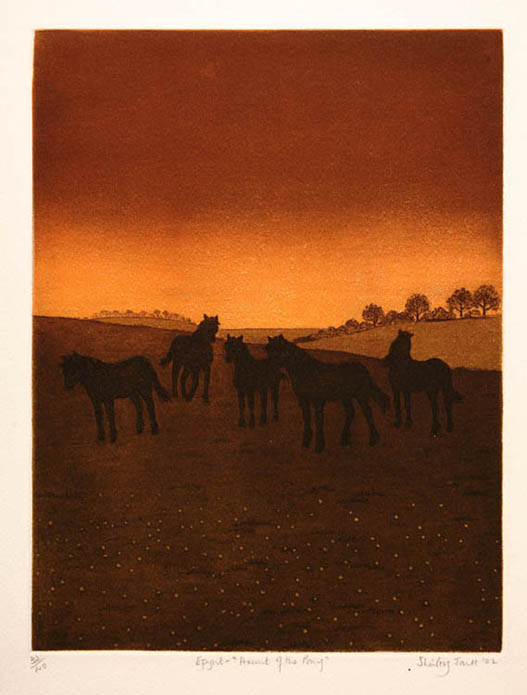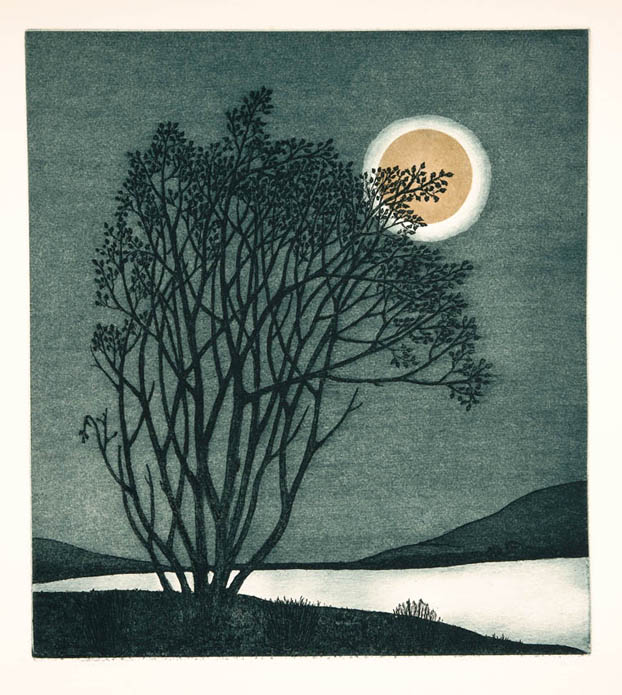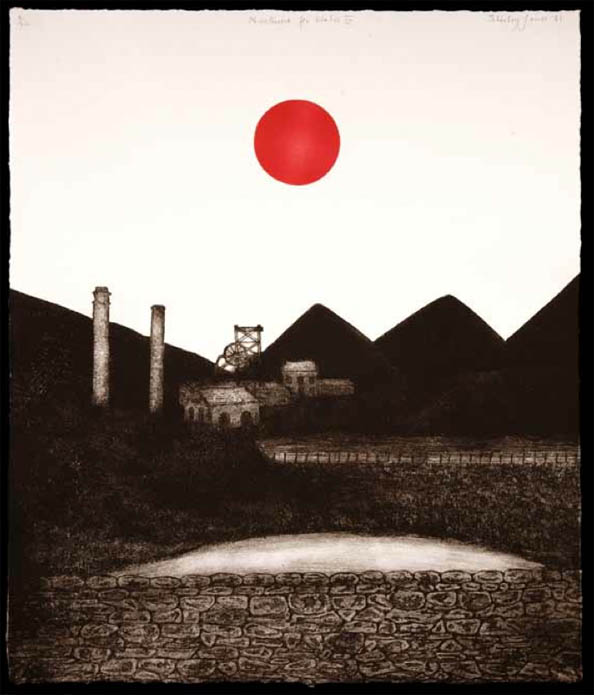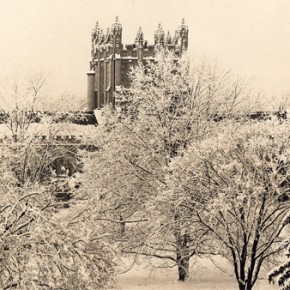Posted on behalf of Ron Patkus, Director of Archives and Special Collections
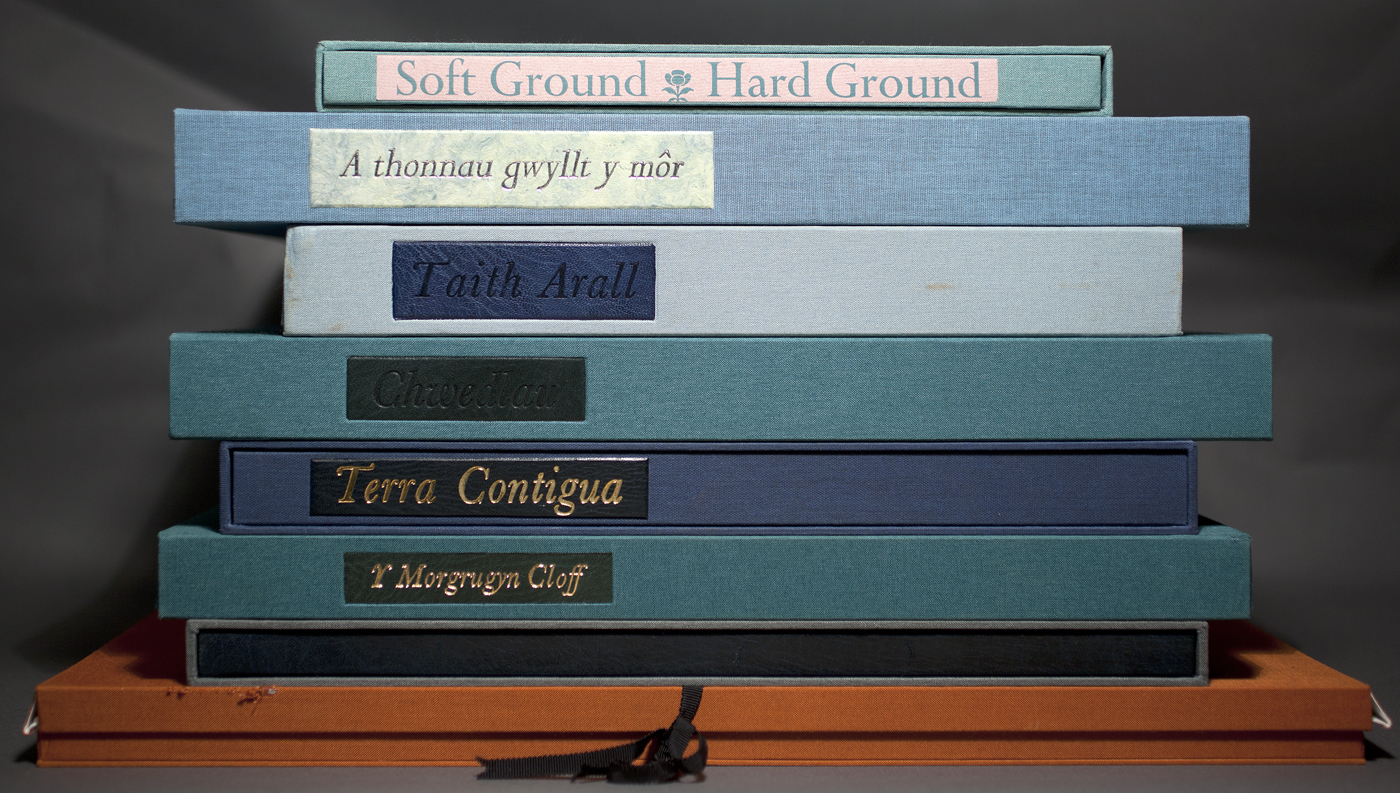 I recently completed a descriptive bibliography of the works of Welsh artist Shirley Jones and the Red Hen Press. A descriptive bibliography is composed of detailed physical descriptions of books, and in order to compile such a work, it was necessary for me to examine copies of every issue that has been produced by the press.
I recently completed a descriptive bibliography of the works of Welsh artist Shirley Jones and the Red Hen Press. A descriptive bibliography is composed of detailed physical descriptions of books, and in order to compile such a work, it was necessary for me to examine copies of every issue that has been produced by the press.
Between 1975 and 2011, Jones produced 32 books, 27 of which are artist’s books. Since 1983, when the Red Hen Press imprint was established, 20 books have appeared. The artist’s books tend to be folio-sized, and are offered in limited editions, usually of 40 copies. Today libraries around the world house copies of these books; the press is especially well represented in colleges and universities in the United States. The Library of Congress owns what is thought to be the only complete collection.
Since 1985 and the publication of A Dark Side of the Sun, each book has been announced with a prospectus. The prospectuses are usually small two-leaf folds, specially printed, which provide information about the book, such as the number of illustrations, the typography, paper, and so on. When the book is printed, such details can be found in the colophon at the back of each book.
The books usually deal with one of three subjects: personal and family issues; contemporary life in Wales; or Old English and early Welsh literature. Some books feature Jones’ own writings or translations, and others draw on the work of other writers. Vassar’s collection concentrates on works dealing with Welsh literature; they include Llym Awel (1993), Y Morgrugyn Cloff (1999), Chwedlau (2005), and Taith Arall (2007).
Jones has become especially well-known for the prints that appear in her books; often they are first encountered on the title page. The artist makes use of etching, aquatint, and mezzotint, all intaglio processes. The last two can achieve great tonality in images. Nature is a common element in Jones’ illustrations, and she often uses the symbol of a mandala (a circle that has spiritual significance) as an identifying mark. Sometimes her books also include blind etchings.
Shirley Jones not only creates the illustrations in her books, she also does the printing of text pages herself. She has used a variety of fonts over the years (Times Roman, Baskerville, Perpetua, Gill Sans, Caslon, Bodoni), though Baskerville is the most common. Often her typographic approach includes colored passages, large initials, and italics. Paper is typically handmade or mould-made from a British paper mill, though papers made outside the U.K. have sometimes been used.
Red Hen Press books have usually been offered to collectors in either an edition binding or a deluxe binding. Edition bindings typically presented cloth covers, with the book placed in a box. The deluxe bindings added other features, such as quarter morocco covers, onlays, or different endpapers. The bindings have sometimes been created by Shirley Jones, but more often she has relied on other bookbinders, such as John Sewell and Jen Lindsay. On occasion, still other bookbinders (e.g. Mary French and Jan Ascoli) have created special design bindings, but these are unique copies that technically were not issued by the press.
It’s easy to see why the books of Shirley Jones and the Red Hen Press are considered fine examples of contemporary artist’s books. In 2013, the 30th anniversary of the press, exhibitions will be held at several locations in the U.S. (including here in the Vassar College Library, as well as Swarthmore, Smith, and the University of Vermont) and abroad. To order copies of the bibliography, which includes comments by the artist on each of the books, visit the Oak Knoll Press.

